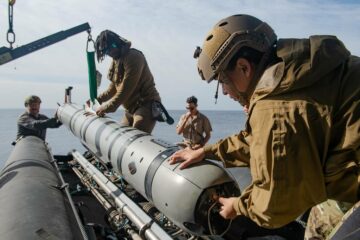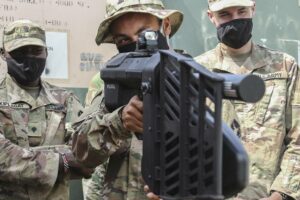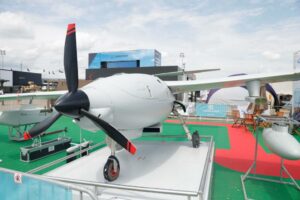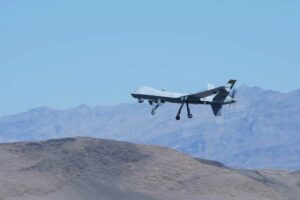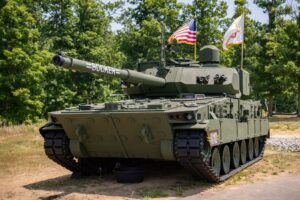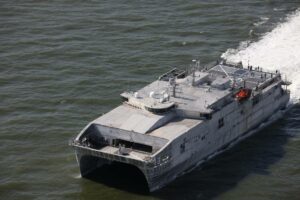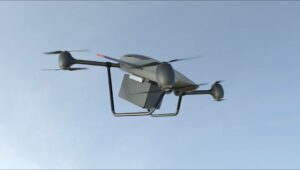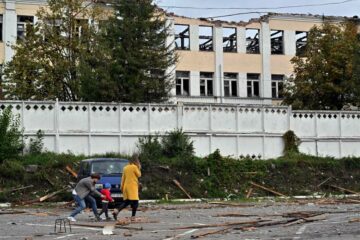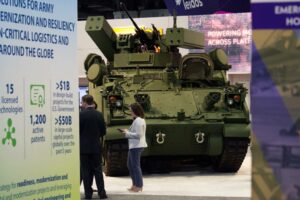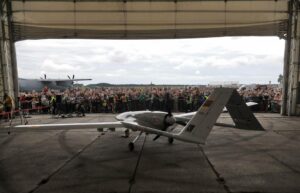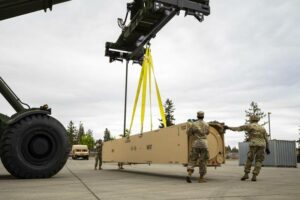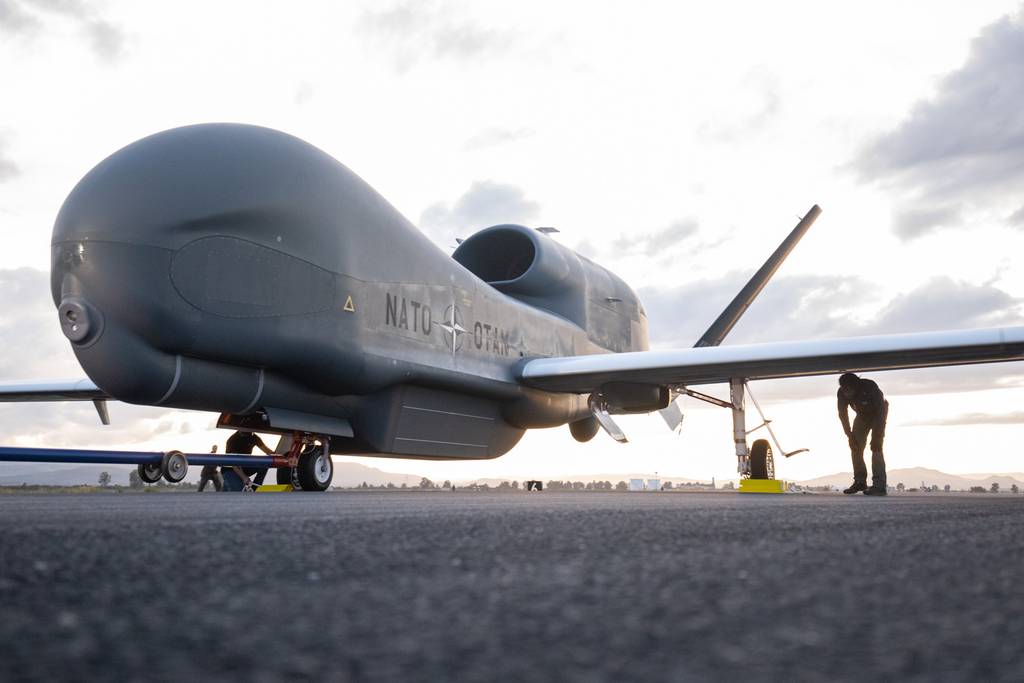
MILAN — NATO is expected to adopt its first-ever counter-drone doctrine, which will in part advise member states on layered approaches to defend against unmanned aerial systems and the common training of operators.
The ambition of establishing a counter-UAS doctrine within the military alliance by the end of 2023 has been in the works for some time, according to Claudio Palestini, a senior adviser at NATO’s emerging security challenges division.
“The formal tasking to create this document was issued at the beginning of this year,” he told Defense News in an interview. “It will build on a handbook produced in 2019 that was more focused on outlining guiding principles on how to effectively counter drones.”
While some of the content between the doctrine and the handbook, which was never made public, will be similar, Palestini said the main difference will be within the level of formality and focus.
“The 2019 handbook was around 600 pages in length and served as a preliminary document,” he said. “The scope of this c-UAS doctrine will be NATO-wide and be much more coherent, condensed into 70-80 pages.”
While the precise tenets it will contain remain vague, one of its overarching goals will be to advise member states on the most effective ways to organize and carry out counter-drone operations in different operational environments.
The high-priority report will outline in part recommendations regarding how to operationalize c-UAS, the importance of multidomain and layered solutions, and setting common training standards for operators.
According to Palestini, the document will be sent in the next few weeks for ratification by a NATO committee in charge of developing military operational standards with the assistance of the NATO Standardization Office. Once all the requested changes are received, it is expected to be approved.
The hope is for the committee to ratify it before the end of the year, if all goes accordingly, he said.
The development of the doctrine preceded Russia’s full-scale invasion of Ukraine, which began in February 2022, Palestini said.
“What the Ukraine-Russia war did lead to is changing the evolution of the threat posed by drones as well as the operational environment where c-UAS can play a role in modern conflicts,” he said.
While NATO recognized some time ago the benefits of operating unmanned aircraft, it was only fairly recently that the majority of member states began to seriously build up their arsenal and defensive capabilities against these systems.
Previous initiatives included the establishment of a NATO c-UAS working group in 2019 and a number of studies carried out by the NATO Industrial Advisory Group on the shortcomings of some counter-drone systems as well as trials to test different technologies.
It remains unclear whether the document will allow for the eventual development of a NATO-owned and -operated c-UAS asset, similar to the Northrop Grumman RQ-4D drone, whose capabilities are available to all member states. The overall cost of the acquisition and maintenance of the remote piloted aircraft were covered by NATO.
Elisabeth Gosselin-Malo is a Europe correspondent for Defense News. She covers a wide range of topics related to military procurement and international security, and specializes in reporting on the aviation sector. She is based in Milan, Italy.
- SEO Powered Content & PR Distribution. Get Amplified Today.
- PlatoData.Network Vertical Generative Ai. Empower Yourself. Access Here.
- PlatoAiStream. Web3 Intelligence. Knowledge Amplified. Access Here.
- PlatoESG. Carbon, CleanTech, Energy, Environment, Solar, Waste Management. Access Here.
- PlatoHealth. Biotech and Clinical Trials Intelligence. Access Here.
- Source: https://www.defensenews.com/unmanned/2023/10/20/nato-to-adopt-first-ever-counter-drone-doctrine-for-member-nations/
- :has
- :is
- :where
- $UP
- 10
- 2019
- 2022
- 2023
- 70
- a
- According
- accordingly
- acquisition
- adopt
- advise
- adviser
- advisory
- against
- ago
- aircraft
- All
- Alliance
- allow
- ambition
- an
- and
- approaches
- approved
- ARE
- around
- Arsenal
- AS
- asset
- Assistance
- At
- available
- Available to all
- aviation
- based
- BE
- been
- before
- began
- Beginning
- benefits
- between
- build
- by
- CAN
- capabilities
- carried
- carry
- challenges
- Changes
- changing
- charge
- COHERENT
- committee
- Common
- conflicts
- contain
- content
- Cost
- Counter
- covered
- covers
- create
- Defense
- defensive
- developing
- Development
- DID
- difference
- different
- Division
- document
- drone
- Drones
- Effective
- effectively
- emerging
- end
- Environment
- environments
- establishing
- establishment
- Europe
- eventual
- evolution
- expected
- fairly
- February
- few
- first-ever
- Focus
- focused
- For
- formal
- full-scale
- Goals
- Goes
- Group
- he
- hope
- How
- How To
- HTTPS
- if
- images
- importance
- in
- included
- industrial
- initiatives
- International
- Interview
- into
- invasion
- Issued
- IT
- Italy
- ITS
- jpg
- layered
- lead
- Length
- Level
- made
- Main
- maintenance
- Majority
- member
- MILAN
- Military
- Modern
- more
- most
- much
- Nations
- never
- news
- next
- number
- of
- Office
- on
- once
- ONE
- only
- operating
- operational
- Operations
- operators
- out
- outline
- outlining
- overall
- overarching
- pages
- part
- piloted
- plato
- Plato Data Intelligence
- PlatoData
- Play
- posed
- precise
- preliminary
- principles
- procurement
- Produced
- public
- range
- received
- recently
- recognized
- recommendations
- regarding
- related
- remain
- remains
- remote
- report
- Reporting
- requested
- Role
- Said
- scope
- sector
- security
- senior
- sent
- seriously
- setting
- she
- shortcomings
- similar
- Solutions
- some
- specializes
- standardization
- standards
- States
- studies
- Systems
- Technologies
- tenets
- test
- that
- The
- their
- These
- this
- this year
- threat
- time
- to
- told
- Topics
- Training
- trials
- Ukraine-Russia war
- unclear
- war
- was
- ways
- Weeks
- WELL
- were
- whether
- which
- whose
- wide
- Wide range
- will
- with
- within
- working
- Working Group
- works
- year
- zephyrnet

